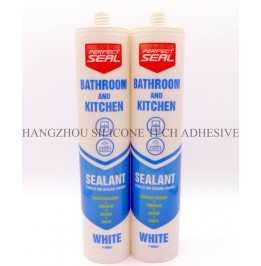Bathroom sealants, commonly used to prevent water penetration and mold growth around sinks, showers, and tubs, require careful handling during post-application cleaning. The choice of cleaning agents is critical to avoid compromising the sealant’s integrity, damaging adjacent surfaces, or creating health hazards. Understanding material compatibility, chemical interactions, and environmental factors ensures long-lasting protection and safety.

Most bathroom sealants are silicone-based or acrylic formulations, which are sensitive to specific chemicals. Silicone sealants, for example, degrade when exposed to solvents like acetone or alcohol, while acrylic variants may dissolve under prolonged contact with alkaline substances. Even neutral-pH cleaners containing abrasive particles can scratch sealant surfaces, reducing their lifespan.
Bathroom fixtures often include materials such as natural stone (marble, granite), porcelain, stainless steel, or coated metals. Strong acids (e.g., hydrochloric acid) or alkalis (e.g., sodium hydroxide) in cleaning agents can etch stone, corrode metal finishes, or strip protective coatings. For instance, marble reacts with acidic cleaners to form soluble salts, leading to pitting and discoloration.
Many commercial cleaners emit VOCs, which can react with sealant components. Solvent-based cleaners, for example, may soften silicone sealants, causing them to lose adhesion. Additionally, VOCs contribute to indoor air pollution, posing respiratory risks, especially in poorly ventilated bathrooms.
Improperly rinsed cleaners leave residues that trap moisture, creating ideal conditions for mold growth. Alkaline residues, in particular, can neutralize the acidity of silicone sealants, weakening their mold-resistant properties. Over time, this residue may also attract dirt, leading to discoloration and reduced aesthetic appeal.
High humidity levels in bathrooms slow the evaporation of cleaning agents, prolonging their contact with sealants and surfaces. This extended exposure increases the risk of chemical reactions, especially for water-based cleaners that may seep into sealant pores. In humid climates, even mild cleaners can leave behind moisture that compromises sealant adhesion.
Poor ventilation exacerbates the effects of cleaning agents. Without adequate airflow, fumes from volatile cleaners linger, potentially corroding metal fixtures or irritating respiratory systems. Additionally, stagnant air prevents quick drying, allowing cleaners to penetrate sealant layers and weaken their structure.
Opt for pH-neutral, water-based cleaners free from abrasives, solvents, or strong acids/alkalis. These formulations are less likely to react with sealants or adjacent surfaces. For example, a mixture of mild dish soap and warm water effectively removes soap scum without risking damage.
Before full application, test cleaners on inconspicuous areas of the sealant or adjacent surfaces. Apply a small amount, wait 24 hours, and check for discoloration, softening, or etching. This precaution is vital for delicate materials like natural stone or vintage fixtures.
Use soft cloths, sponges, or microfiber towels to avoid scratching sealants. Avoid abrasive scrubbers or steel wool, which can wear down sealant surfaces. For stubborn stains, apply a cleaner, let it sit briefly, and wipe gently rather than scrubbing vigorously.
After cleaning, thoroughly rinse the area with water to remove all traces of the cleaner. Dry surfaces with a clean towel or allow them to air-dry in a well-ventilated space. Prompt drying prevents moisture retention, which could otherwise weaken sealant adhesion or promote mold growth.
By adhering to these guidelines, homeowners and professionals can maintain bathroom cleanliness without compromising the effectiveness of sealants or damaging surrounding materials. Prioritizing material compatibility, chemical safety, and environmental control ensures both aesthetic appeal and long-term durability.
Copyright 2019 by Hangzhou Silicone Tech Adhesive Co., Ltd. All rights reserved.
Bathroom Sealant | Acrylic Sealant | Dow Corning 795 | Aquarium Sealant | Dow Corning 732 | Clear Silicone Sealant | Polysulfide Sealant | Glazing Sealant | Mirror Sealant | IG Sealant
Powered by Onepound